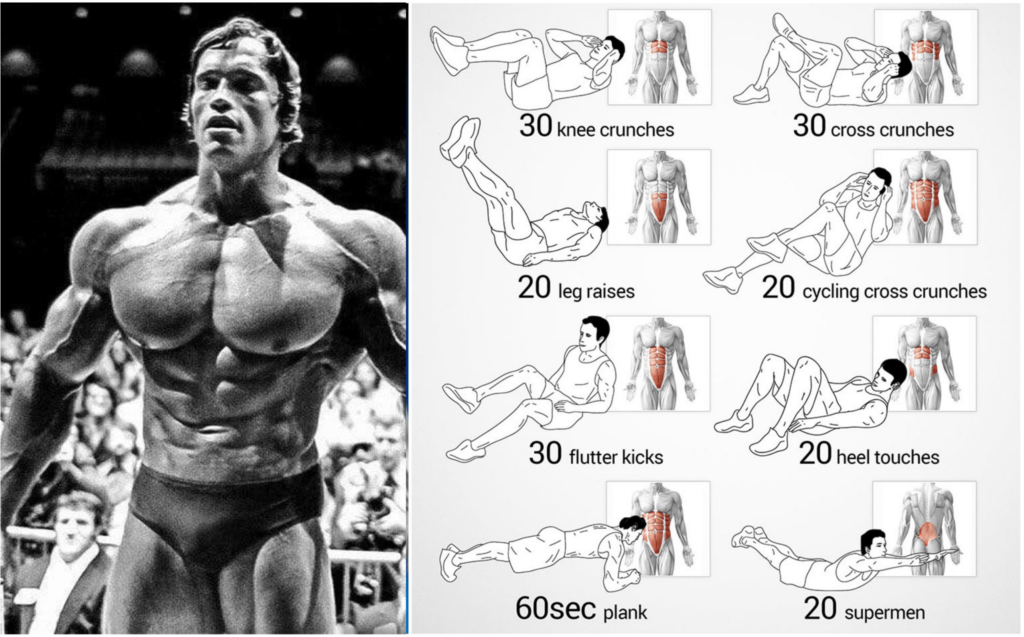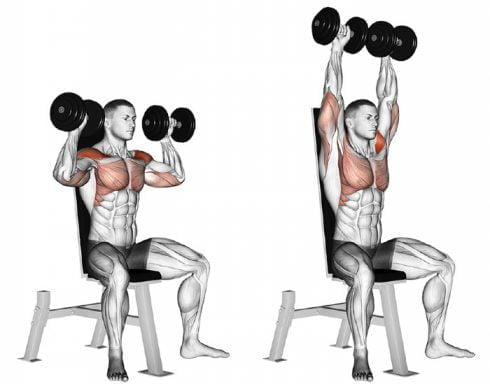In this article, we’ll explore the topics; How Squats Work Abs, Squat Variations for Abs, Benefits of Squats for Abs and Core, and other important topics.
A strong core is essential for overall fitness and well-being as it helps to stabilize the spine, improve posture, and reduce the risk of injuries. When it comes to engaging the core muscles, squats are a great exercise that works not only the lower body but also the abs and other core muscles.
Squats engage the core by requiring the body to maintain a stable and upright position while performing the movement. This engages the abdominal muscles and other muscles in the torso, making it an effective way to strengthen the entire core. So, if you want to build a strong core, squats are an excellent exercise to incorporate into your workout routine. In this article, we will explore how squats work abs and other core muscles to help you build a strong foundation for your body.
How Squats Engage Abs?

Squats are a popular exercise for building strength and improving overall fitness. In addition to targeting the legs and glutes, squats can also engage the abs and other core muscles. By understanding how squats work the abs, you can ensure that you are performing the exercise correctly and maximizing the benefits for your entire body.
Types of Squats and How how each can engage the abs and other core muscles
There are various types of squats, each with its own benefits and ways of engaging the abs and other core muscles. Here are a few examples:
- Bodyweight squats: This type of squat can be performed anywhere and is an excellent exercise for beginners. Bodyweight squats engage the abs by requiring the body to maintain a stable and upright position throughout the movement.
- Goblet squats: Goblet squats are performed with a weight held close to the chest, which forces the body to engage the abs to maintain balance and stability. This exercise is great for building core strength while also targeting the legs and glutes.
- Barbell squats: Barbell squats are a more advanced exercise that involves lifting a heavy barbell on the shoulders. This exercise engages the abs by forcing the body to maintain proper form and stability under heavy load.
- Single-leg squats: Also known as pistol squats, this exercise involves squatting down on one leg while keeping the other leg straight out in front of the body. Single-leg squats are challenging and require significant core strength to maintain balance and stability.
- Sumo squats: This type of squat involves taking a wide stance with the toes pointing outwards. Sumo squats engage the abs by requiring the body to maintain a stable position and keep the knees from collapsing inward.
- Front squats: Front squats are performed with the barbell held in front of the body, resting on the shoulders. This exercise engages the abs by forcing the body to maintain an upright posture and keep the chest lifted.
- Overhead squats: Overhead squats are performed with the weight held overhead, typically with a barbell or dumbbell. This exercise engages the abs by requiring the body to maintain stability and balance while holding the weight overhead.
- Bulgarian split squats: This exercise involves elevating one foot behind the body and performing a squat on the other leg. Bulgarian split squats engage the abs by requiring the body to maintain balance and stability on one leg while performing the squat on the other.
By incorporating a variety of squat types into your workout routine, you can target different muscles and engage the abs in various ways. Be sure to focus on maintaining proper form and engaging the core with each squat rep to get the most out of your workout.
how do proper form and technique can maximize core engagement during squats?
Proper form and technique are essential for maximizing core engagement during squats. Here are a few examples of how you can adjust your form to engage the abs and other core muscles more effectively:
- Engage the core before descending: Before descending into a squat, engage your core by pulling your belly button in towards your spine. This action will help stabilize your spine and engage your abs throughout the movement.
- Keep your chest up: Keeping your chest lifted during the squat will help engage the muscles in your upper back and core. Try to maintain a straight line from your head to your hips throughout the movement.
- Focus on your breathing: Breathing correctly can help engage your abs and increase core stability during squats. Inhale deeply before descending into the squat, and exhale forcefully as you push back up to the starting position.
- Keep your knees in line with your toes: Allowing your knees to collapse inward during a squat can put stress on your knees and take the focus away from your core muscles. Keep your knees in line with your toes throughout the movement to engage the muscles in your hips and core.
- Squeeze your glutes at the top: As you push up out of the squat, squeeze your glutes to engage the muscles in your hips and lower back. This action will help stabilize your core and maintain proper form throughout the movement.
- Maintain a neutral spine: Keeping your spine in a neutral position throughout the squat will help engage your abs and lower back muscles. Avoid rounding or arching your back, as this can put unnecessary strain on your spine and take the focus away from your core.
- Control your descent: Lowering yourself into the squat slowly and under control will help engage your core muscles and prevent injury. Avoid dropping down too quickly, as this can cause your back to round and take the focus away from your core.
- Use a weight that challenges you: Using a weight that is too light will not engage your core muscles effectively while using a weight that is too heavy can compromise your form and lead to injury. Choose a weight that challenges you without sacrificing form or safety.
- Use a mirror: Using a mirror to check your form during squats can help you maintain proper alignment and engage your core muscles more effectively. Make sure you can see your entire body in the mirror, and check your form regularly during the exercise.
- Incorporate variations: Incorporating variations of the squat, such as single-leg squats or sumo squats, can help engage your core muscles in different ways and prevent boredom in your workout routine.
By focusing on proper form and technique, you can maximize core engagement during squats and get the most out of your workout. Incorporate these tips into your squat routine and see how they improve your overall strength and fitness.
tips for beginners who may struggle with maintaining core engagement during squats
here are some tips for beginners who may struggle with maintaining core engagement during squats:
- Start with Bodyweight Squats: Before adding any weight to your squats, it’s important to master the proper form and technique. Practice bodyweight squats, focusing on maintaining proper posture and engaging your core throughout the movement.
- Use a Mirror: Position yourself in front of a mirror to monitor your form and ensure that you’re maintaining proper posture and core engagement. Pay attention to whether your shoulders are rounded, if your lower back is arched, or if your knees are collapsing inward.
- Brace Your Core: Before you begin the squat, take a deep breath and brace your core muscles as if someone is about to punch you in the stomach. This will help you maintain proper posture and stability throughout the movement.
- Start with a Wider Stance: A wider stance can help beginners maintain balance and engage their core muscles more easily. Try starting with a shoulder-width or slightly wider stance and gradually narrowing it as you become more comfortable.
- Engage Your Glutes: Your glutes are also an important muscle group to engage during squats, and doing so can help you maintain core stability. Focus on squeezing your glutes as you come up from the squatting position.
- Work with a Trainer: If you’re still struggling with maintaining core engagement during squats, consider working with a certified trainer who can help you with proper form and technique, and provide guidance on how to engage your core effectively.
Benefits of Squats for Abs and Core
Squats are one of the most effective exercises for building a strong core, including the abs. Here are some of the benefits of squats for the abs and core:
- Improved Core Stability: Squats work the core muscles, including the rectus abdominis, transverse abdominis, and obliques, which help to stabilize the spine and maintain proper posture during the exercise.
- Increased Balance: Squats require a great deal of balance and coordination, especially when performing them with weights. This helps to activate and strengthen the core muscles, improving overall balance and stability.
- Better Posture: Poor posture can lead to a host of problems, including back pain and decreased mobility. Squats help to improve posture by strengthening the muscles of the core, which support the spine and help to maintain an upright position.
- Stronger Abs: Squats work the rectus abdominis, the muscle responsible for the “six-pack” look. By engaging the abs during squats, you can strengthen and tone these muscles, leading to a flatter, more defined midsection.
- Increased Calorie Burn: Squats are a compound exercise that engages multiple muscle groups, including the legs, glutes, and core. By working more muscles, squats can help to burn more calories and boost metabolism.
- Improved Athletic Performance: Strong core muscles are essential for many athletic activities, such as running, jumping, and lifting weights. Squats can help to improve core strength, leading to improved performance in sports and other physical activities.
- Reduced Risk of Injury: A strong core can help to reduce the risk of injury, especially in the lower back. Squats help to strengthen the muscles that support the spine, reducing the risk of lower back pain and other injuries.
- Better Spinal Alignment: Poor spinal alignment can lead to a range of problems, including pain, stiffness, and decreased mobility. Squats help to improve spinal alignment by strengthening the core muscles that support the spine.
How Squats Work Abs:
Squats work the abs by engaging the core muscles throughout the exercise. As you lower yourself into the squat position, the core muscles must work to stabilize the spine and maintain proper posture. As you rise back up from the squat, the abs contract to help lift the weight and maintain stability.
To maximize the ab engagement during squats, focus on maintaining proper form and technique. Keep your core muscles engaged throughout the exercise, bracing them as if someone is about to punch you in the stomach. Additionally, try adding some variety to your squats, such as performing them with a weight or using different types of squat variations to engage different areas of the abs and core.
Squat Variations for Abs
There are several squat variations that can specifically target the abs, including:
a) Front Squats
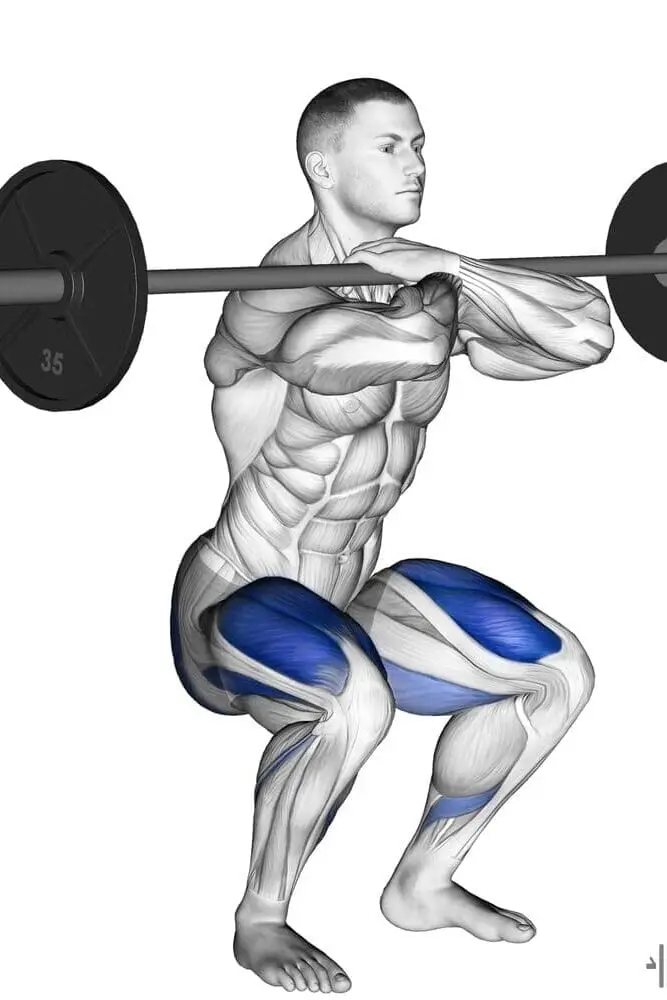
In this variation, the barbell is held in front of the body instead of on the back. This requires greater core stability and helps to engage the abs.
b) Overhead Squats
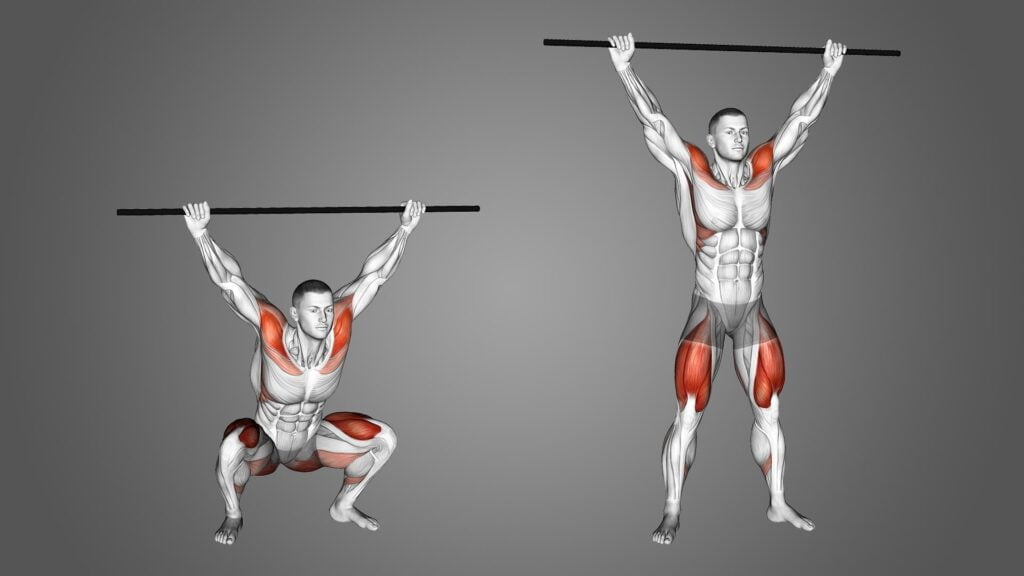
In this variation, the barbell is held overhead, requiring greater core strength and stability. This variation also helps to improve shoulder mobility and stability.
c) Goblet Squats

In this variation, a kettlebell or dumbbell is held at chest height. This helps to engage the abs and also improves upper back and shoulder mobility.
d) Single-Leg Squats
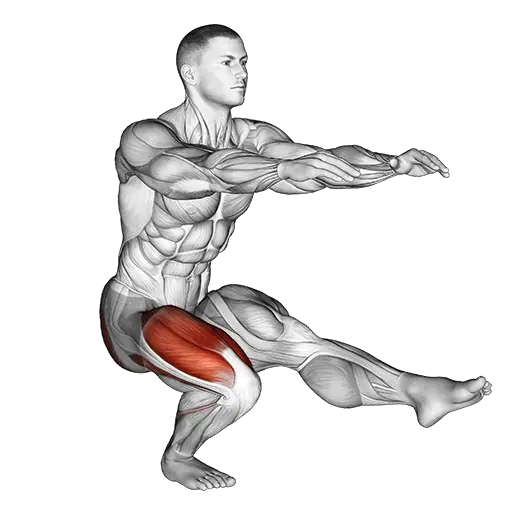
This variation is also known as pistol squats. It involves squatting down on one leg while the other leg is extended straight out in front of you. This variation helps to improve balance and stability while also engaging the abs and other core muscles.
e) Sumo Squats

This variation involves standing with your feet wider than shoulder-width apart and your toes turned out. As you lower into the squat, your knees will track out over your toes, helping to engage the abs and inner thighs.
f) Bulgarian Split Squats

This variation involves standing in a lunge position with one foot elevated behind you. As you lower into the squat, your front knee will bend while your back knee stays elevated, helping to engage the abs and other core muscles.
g) Box Squats
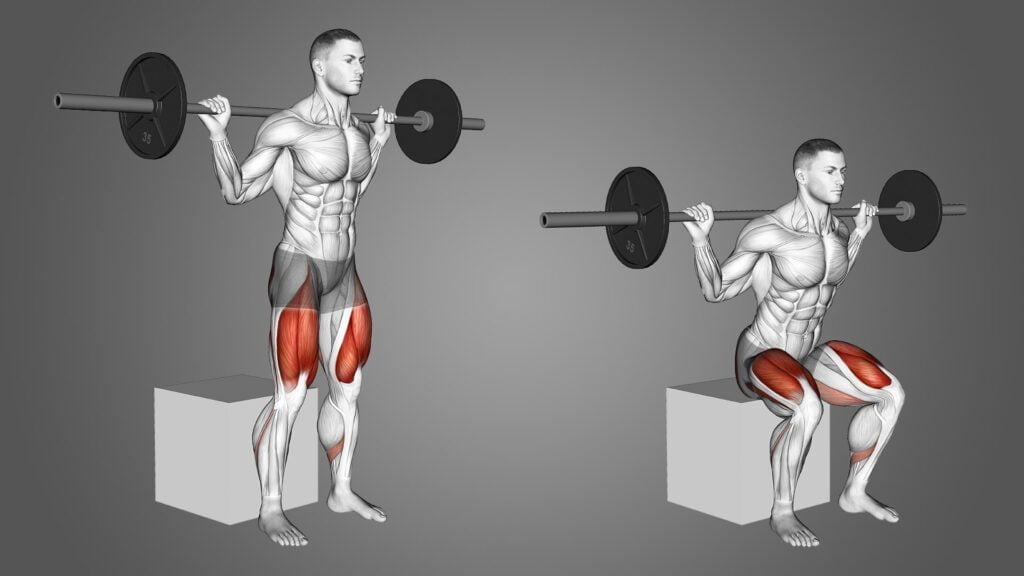
This variation involves squatting down on a box or bench. By pausing at the bottom of the squat, you engage your core muscles to maintain stability and control. This variation can also help to improve hip mobility and strengthen the glutes.
How Squat Variations Help Strengthen Abs and Core Muscles
Squat variations that target the abs help to improve core strength and stability, which is important for maintaining good posture, preventing lower back pain, and improving athletic performance. These variations engage not only the abs but also the obliques, hip flexors, and other core muscles, resulting in a more complete core workout.
Front squats, for example, require greater core stability because of the positioning of the weight. This helps to strengthen the abs and other core muscles to support the spine and maintain proper posture. Overhead squats require even greater core strength and stability, as well as shoulder mobility and stability. Goblet squats help to improve upper back and shoulder mobility while also engaging the abs and other core muscles.
How to Perform Squat Variations Safely and with Proper Form
Before attempting any squat variation, it is important to master the proper form of the traditional squat. Here are some tips for performing the three squat variations listed above:
a) Front Squats – Begin with a lightweight and practice the movement without any weight to get the form correct. Hold the barbell across the front of your shoulders with your elbows pointing forward. Keep your chest up and your core tight as you lower into the squat. Make sure your knees do not go beyond your toes and that your back stays straight.
b) Overhead Squats – Begin with a lightweight and practice the movement without any weight to get the form correct. Hold the barbell overhead with your arms straight and your hands wider than shoulder-width apart. Keep your chest up and your core tight as you lower into the squat. Make sure your knees do not go beyond your toes and that your back stays straight.
c) Goblet Squats – Hold a kettlebell or dumbbell at chest height with your elbows pointing down. Keep your chest up and your core tight as you lower into the squat. Make sure your knees do not go beyond your toes and that your back stays straight.
d) Single-Leg Squats (Pistol Squats) – Stand with your feet hip-width apart and your arms extended in front of you for balance. Lift one foot off the ground and extend it straight out in front of you. Begin to squat down on the other leg, keeping your weight on your heel and your chest up. Lower yourself as far as you can while maintaining good form, then push back up to the starting position. Repeat for the desired number of reps, switch legs and repeat on the other side.
e) Sumo Squats – Stand with your feet wider than shoulder-width apart, with your toes turned out. Hold a weight in front of your chest for added resistance, if desired. Begin to squat down, keeping your knees in line with your toes and your chest up. Lower yourself as far as you can while maintaining good form, then push back up to the starting position. Repeat for the desired number of reps.
f) Bulgarian Split Squats – Stand facing away from a bench or step, with one foot elevated behind you on the bench. Begin to squat down on the front leg, keeping your knee in line with your toes and your chest up. Lower yourself as far as you can while maintaining good form, then push back up to the starting position. Repeat for the desired number of reps, switch legs and repeat on the other side.
g) Box Squats – Stand with a bench or box behind you. Begin to squat down, keeping your weight in your heels and your chest up. As you lower yourself down, sit back onto the box or bench, then pause for a moment before pushing back up to the starting position. Repeat for the desired number of reps.
Regardless of which squat variation you choose, it is important to start with a light weight and focus on proper form before increasing the weight. Always warm up before any workout and consult with a qualified fitness professional if you are unsure about any exercise.
Conclusion
Squats are an essential exercise that should be incorporated into a well-rounded fitness routine. They target multiple muscle groups, including the glutes, quads, and hamstrings, and can also improve core strength, stability, and balance. Squats can also help to improve athletic performance and functional movement patterns.
Incorporating different squat variations, such as front squats, back squats, and goblet squats, can help to target different muscle groups and prevent boredom in your workout routine. It’s important to use proper form when performing squats to prevent injury and maximize their benefits.
If you’re not currently incorporating squats into your workout routine, consider adding them in and starting with bodyweight squats or lighter weights before progressing to more challenging variations. Your body will thank you for it in the long run.
So, start incorporating squats into your workout routine today and experience the many benefits they have to offer.

Good day, and welcome to Fitthour. My name is Shubham Vijay, and I am a certified personal trainer and nutrition coach with 6 years of experience in the fitness industry. At Fitthour, we specialize in types of training, such as strength training, cardio, or HIIT, and our mission is to help clients achieve their fitness goals and improve their overall health.

